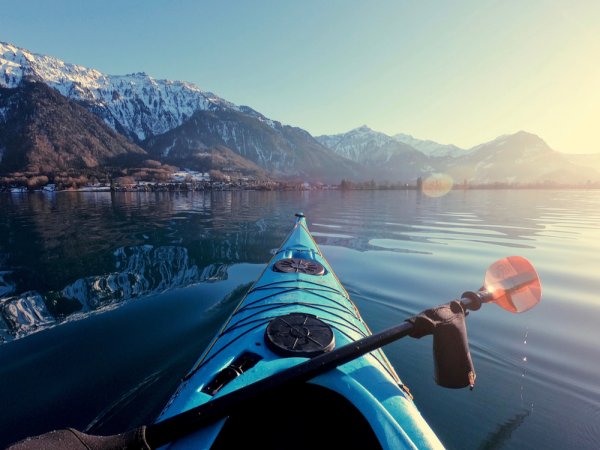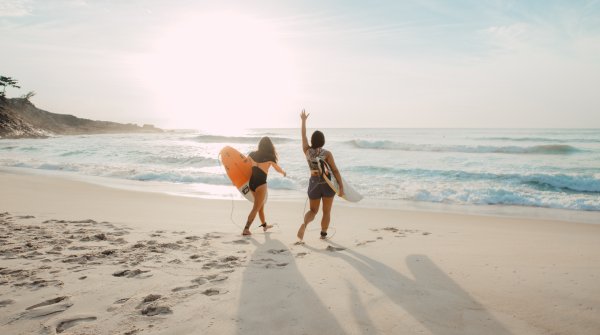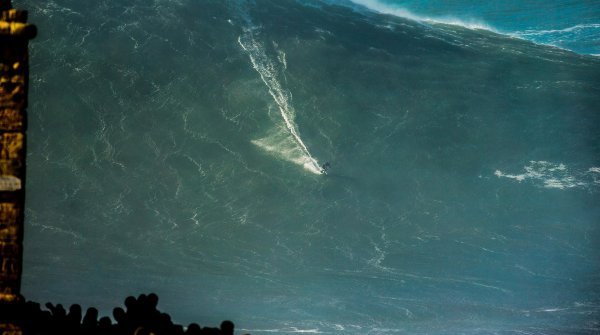Together with the Canadian, the kayak is one of the main subgroups of the canoe. This is mainly characterized by its elongated shape and the view in the direction of travel. Kayaks are ridden with a double paddle in a sitting position with the legs stretched out in front. Canadians, on the other hand, are used in a kneeling position and a single-bladed paddle.
The kayak was originally used by the Eskimos as a fast and agile means of transportation for hunting on the water. Precisely because of these characteristics, it has become one of the most popular pieces of sports equipment for water sports on rivers and lakes and has already gained many followers. We have compiled 5 reasons why the sport is guaranteed to suit you.
Depending on your preferences, you can choose from different variants, each perfectly adapted to different flow and riding conditions. We have listed the three most important ones below.
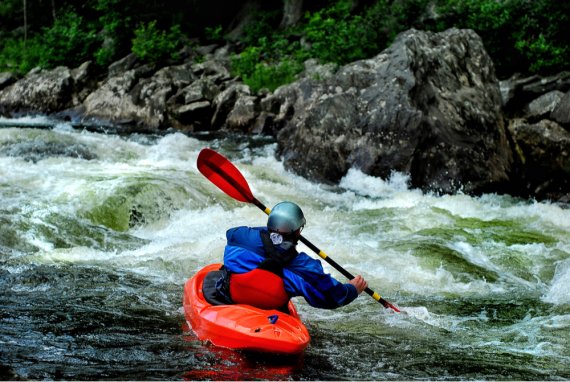
White water kayaks are optimally adapted to the conditions in wild rivers. Due to the length of about 3 meters and the wide, voluminous body, you can not easily capsize in such a model and it comes out of rollers and backwaters better. Because of its stability it is popular with beginners.
Sea and hiking kayaks on the other hand are with 4 - 5 meters longer and narrower than the white water version. Since the danger of capsizing is significantly lower when sailing on calm rivers and lakes, more emphasis is placed on reducing water resistance with this type of construction. This means that long distances can be covered with considerably less effort. Above all, lake and hiking kayaks are suitable for quiet riders who want to enjoy the surroundings.
Freestyle kayaks are the shortest with 1.80 to 2.60 metres and are mainly used by professionals. Due to their outstanding manoeuvrability, waves, rollers and backwaters can be navigated with ease. This model is very unstable in the water and is not suitable for beginners. Anyone who wants to ride such a kayak should already have some experience.
Kayaking mainly trains the arms and torso, but the legs also have to work well to make optimal progress. It is an endurance sport that challenges the whole body. Long trips in particular are very strenuous and use up a lot of energy. If it becomes too strenuous for you, you can always take a break in a quiet place to recover. Most models have waterproof storage compartments for this purpose, in which provisions can be taken along.
Many sports rely on walkable and navigable paths or a fixed route. Orientation and navigation require concentration and often distract from the surroundings. With kayaking, on the other hand, you are guided by the course of the river or are on open lakes where orientation is very easy. This way you can enjoy the sight of nature undisturbed. Our interview with Peter Csonka and Nina Csonkova, the best freestyle kayakers in the world, offers an insight into this feeling.
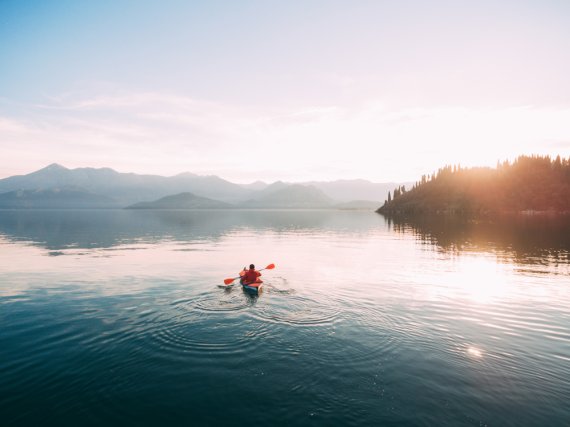
That is perhaps what makes kayaking so special: A feeling. A feeling that hardly any other sport can offer. A mix of peaceful routes and wild rides in the beautiful nature of our world.
Conventional models take up a lot of space and are difficult to transport. Spontaneous trips on vacation are therefore associated with a lot of work, especially with several people. If that's too much effort for you, you can get an inflatable version as a flexible alternative. These do not take up much storage space in the car when empty and are ready for use after just a short inflation with an electric air pump.
The kayak is a summer sport - at least that's what many people think. The cold air and even colder water discourages most paddlers, but it is actually possible to kayak all year round, even in winter. After some preparation, you are rewarded with breathtaking snowy landscapes, white-covered shores, and a soothing silence. This rarely has to be shared due to the few riders in winter.
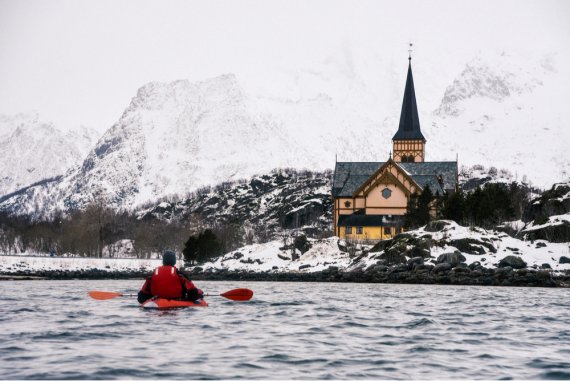
The most important thing in the cold is the right clothing. The body gives off a lot of heat through the head, so headgear is highly recommended to avoid hypothermia and to keep the ears warm. The same applies to the hands: having to hold the paddle with ice-cold fingers can quickly ruin a comfortable tour. Thickly padded gloves are essential for a trip in winter. Of course, warm clothing for the upper body, legs and feet is a must. This is best layered so that layers can be taken off and put on as needed.
There is always a risk of capsizing. As the cold water cools the body quickly and makes swimming difficult, it is essential to wear a life jacket and a waterproof outer layer of clothing. Safety is also paramount when kayaking.
Kayaking is one of the few water sports that is possible all year round. Whether alone, with friends or family - as a strenuous sport in white water or quietly in the lake to observe nature - kayaks are fun for many people. Maybe you too will soon discover your passion for paddling!
You now know roughly what equipment you need - so that nothing goes wrong on your canoe trip and you are well equipped, we have summarized the following checklist for you:
- Life jacket
- Helmet
- Sunglasses and sunscreen (in summer)
- Headlamp or flashlight
- First aid kit
- Paddle
- Thick padded hat (in winter)
- Gloves (in winter)
- Barrels or bags (waterproof)
- Throw bag (as a rescue anchor)
- Water map
With this checklist in your luggage every canoe trip will be successful in the future!
Below we have answered the most frequently asked questions about kayaking.
Prices vary and depend on quality factors. Entry-level models are available from 250 € to 300 €. Professional models cost several thousand euros.
There isn't one. Canoe is the generic term for kayaks.
Kayaks are enclosed boats with a seating hatch.
Some kayaks are inflatable boats that float in the water and are normally designed for two people.
The load varies and is normally 200 to 300 kilograms. Inflatable kayaks have a load capacity of 150 to 250 kilograms.
- ISPO awards
- Mountain sports
- Bike
- Design
- Retail
- Fitness
- Health
- ISPO Job Market
- ISPO Munich
- ISPO Shanghai
- Running
- Brands
- Sustainability
- Olympia
- OutDoor
- Promotion
- Sports Business
- ISPO Textrends
- Triathlon
- Water sports
- Winter sports
- eSports
- SportsTech
- OutDoor by ISPO
- Heroes
- Transformation
- Sport Fashion
- Urban Culture
- Challenges of a CEO
- Trade fairs
- Sports
- Find the Balance
- Product reviews
- Newsletter Exclusive Area
- Magazine
